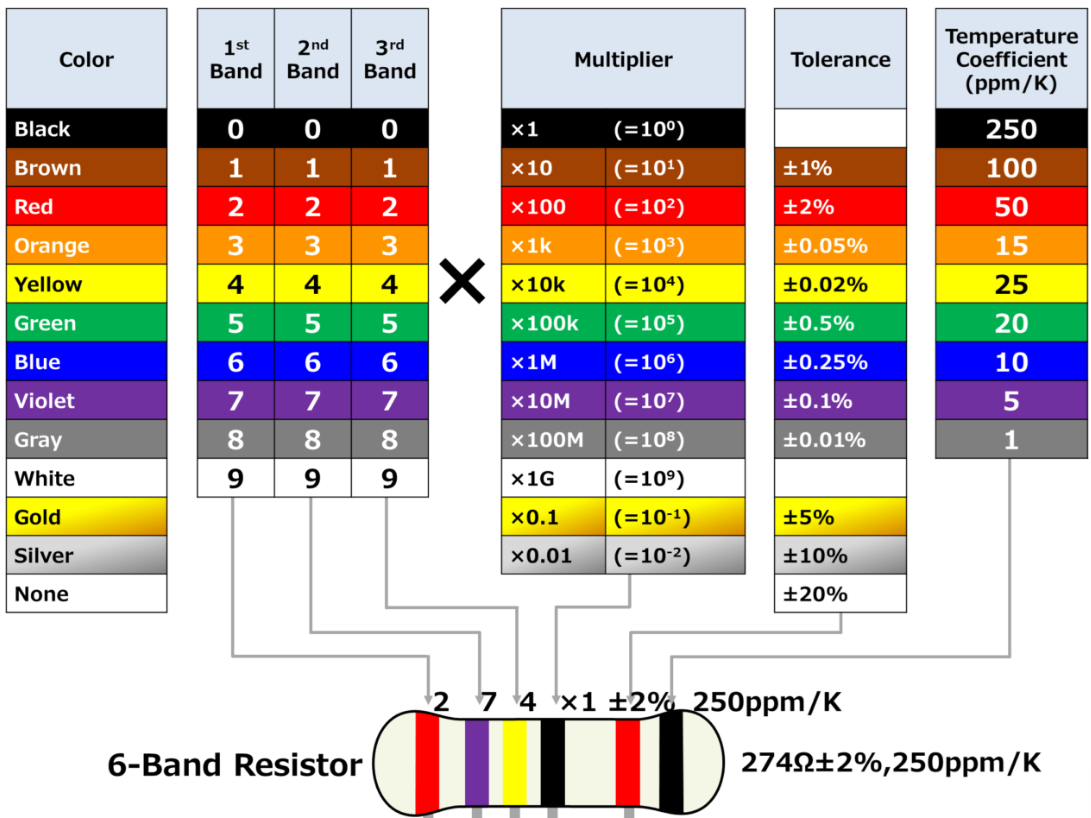Step 1: Identify The Number of Bands on The Resistor
As we referenced above, resistors can markedly vary in the numbers of bands they have:
- On a three or four-band resistor, the first two bands will denote the first two digits of the resistance value in ohms. The third band will be the multiplier, indicating the power of 10 that you will need to multiply the first two digits by.
The fourth band, if present, will indicate tolerance – the degree to which the actual resistance might vary from its nominal value.
If you are looking at a three-band resistor – in other words, this final band is absent – we would advise you to bear in mind the default tolerance is ±20%.
- On a five or six-band resistor – a resistor with high precision – there will be a further colour band to indicate a third significant digit. So, on such a resistor, it will be the fourth band that is the multiplier, and fifth band the tolerance. That leaves the sixth band (if present) to indicate the temperature coefficient.




